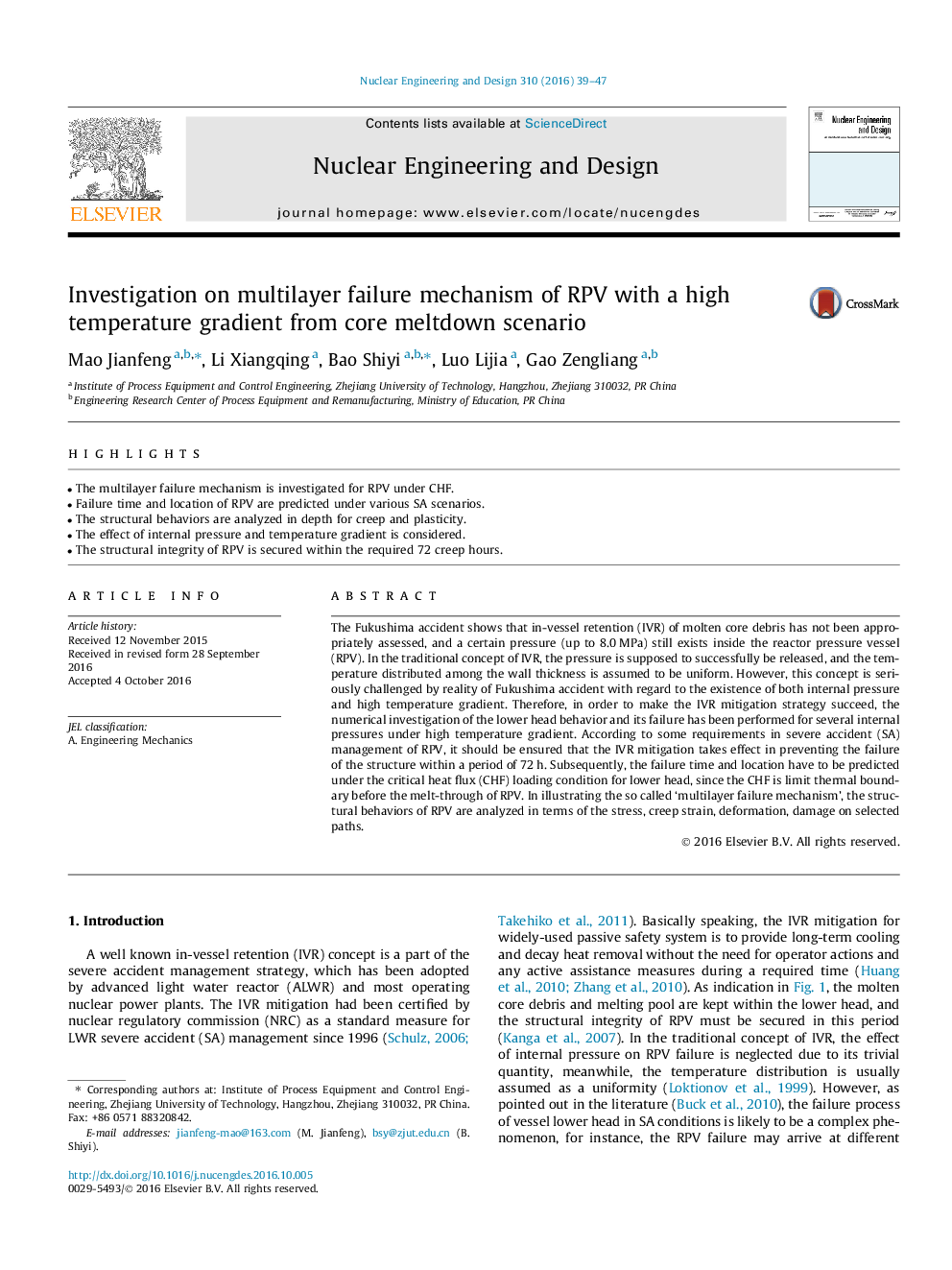| Article ID | Journal | Published Year | Pages | File Type |
|---|---|---|---|---|
| 4925612 | Nuclear Engineering and Design | 2016 | 9 Pages |
Abstract
The Fukushima accident shows that in-vessel retention (IVR) of molten core debris has not been appropriately assessed, and a certain pressure (up to 8.0Â MPa) still exists inside the reactor pressure vessel (RPV). In the traditional concept of IVR, the pressure is supposed to successfully be released, and the temperature distributed among the wall thickness is assumed to be uniform. However, this concept is seriously challenged by reality of Fukushima accident with regard to the existence of both internal pressure and high temperature gradient. Therefore, in order to make the IVR mitigation strategy succeed, the numerical investigation of the lower head behavior and its failure has been performed for several internal pressures under high temperature gradient. According to some requirements in severe accident (SA) management of RPV, it should be ensured that the IVR mitigation takes effect in preventing the failure of the structure within a period of 72Â h. Subsequently, the failure time and location have to be predicted under the critical heat flux (CHF) loading condition for lower head, since the CHF is limit thermal boundary before the melt-through of RPV. In illustrating the so called 'multilayer failure mechanism', the structural behaviors of RPV are analyzed in terms of the stress, creep strain, deformation, damage on selected paths.
Related Topics
Physical Sciences and Engineering
Energy
Energy Engineering and Power Technology
Authors
Mao Jianfeng, Li Xiangqing, Bao Shiyi, Luo Lijia, Gao Zengliang,
